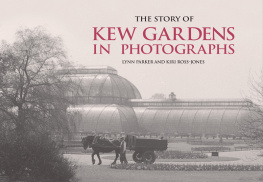Acknowledgments
Researching, writing, and photographing this book were possible only with the help and encouragement of family and friends as well as the many artists, gallery owners, gardeners, and others we met along the way. We would like to extend our heartfelt appreciation to all the artists whose gardens are represented here. We feel honored and humbled by how graciously they opened their lives and their homes to us, the extraordinary talent they exhibit in their work and their gardens, and the time and attention they took from their busy lives to indulge our every request.
Heartfelt thanks go to Karin Womer, our dedicated editor at Down East. Special thanks go to Ashley Curry for her research assistance and wonderful photography of the gardens in Connecticut, as well as to Caryn B. Davis, Suzanne Mamet, Geoffrey Stein, Dana Salvo, Glen Scheffer, Andrea Wenglowskyj, Georgie Friedman, Mike Bacigalupo, Jay York, and Roger Birn for their images of gardens and artwork. We would also like to acknowledge Lea Poisson, June Fitzpatrick, Peggy Golden, and June La-Combe for helping us in our research; the Sharon Arts Center for providing valuable information about artists in New Hampshire; and Carol McIntyre for her editing insight. Thank you to Cheryl Michaelsen and Mike LaPosta at the Berry Manor Inn in Rockland, Maine, and to Jim and Carolyn Wagner for making our travels such a pleasure.
From Judy, special thanks go to Michelle Cheung and Kate Kaminski for their mentoring and encouragement through the writing process and to my wonderful husband, Jim Thibault, whose faith in my abilities kept me going long after my own was depleted.
From Nance, a big thanks to my family for all of their continued encouragement, support, and love through many long weeks of travel and shooting. Also, a huge thank-you to my chosen family, Steve and Mary Dwyer, who were always there with words of support, love, and offers of home-cooked meals.
Bibliography
Bush-Brown, Louis and James
Americas Garden Book. New York, Macmillan, 1996.
Cox, Madison, and Erica Lennard
Artists Gardens: From Claude Monet to Jennifer Bartlett
New York, Harry N. Abrams, Inc., 1993.
DeWolf, Gordon P. Jr., editor
Taylors Guide to Perennials. Boston, Houghton Mifflin, 1961.
Gilbert, Alma M., and Judith B. Tankard
A Place of Beauty: The Artists and Gardens of the Cornish Colony
Berkeley, California, Ten Speed Press, 2000.
Laws, Bill
Artists Gardens. Chicago, Trafalgar Square Publishing, 1999.
Lima, Patrick
The Harrowsmith Perennial Garden. Ontario, Canada, Camden House Publishing, 1987.
Sgaravatti, Mariella, and Mario Ciampi
Tuscany Artists Gardens. London, Verba Volant Ltd., 2004.
Tenenbaum, Frances
Taylors 50 Best Trees: Easy Plants for More Beautiful Gardens. Boston, Houghton Mifflin, 1999.
Williams, Paul
The Garden Color Book. San Francisco, Chronicle Books, 2000.
American Hosta Society, www.hosta.org
The American Peony Society, www.americanpeonysociety.org
The National Gardening Association, www.garden.org
Brooklyn Botanical Garden, www.bbg.org
The Plant Press, www.plantpress.com
Help Me Find Roses, www.helpmefind.com
ABOVE: From Maggies second-floor studio the view into her back garden is framed by the dense greenery of Weeping Elm, rhododendron, euonymus, and a single Japanese white pine.
Maggie Foskett
a small marvel
With steady hands , Maggie Foskett carefully arranges a small piece of red leaf lettuce and a lacy maple seed between two thin squares of glass and holds them up to the light. Im nearsighted, so I always need to look closely at things. If something has a vibrant color or unusual shape, I want to pick it up and touch it. Theyre really small marvelswhen I find them I like to record them.
In her darkroom on Floridas Sanibel Island, Maggie spends the winter creating images with a cameraless photographic technique called clich-verre . In a tiny rectangle of glass the size of a 35mm slide, she layers found bits of nature and begins the arduous process of transforming them into large, brilliant Cibachrome prints.
With photography, I think youre missing something if you dont fool around in the darkroom, Maggie says. She took up photography at the age of fifty-seven and became interested in clich-verre almost immediately. Developed by William Fox Talbot in the early 1800s, the technique originally involved drawing on glass and using sunlight to make a direct print onto light-sensitive paper. Maggie has adapted the technique using an enlarger to capture the colors and details of translucent organisms in compositions that magnify their unexpected patterns and surprising beauty. Over the years she has varied the process to include the use of contact-printed X-rays. When utilizing organic material such as a luna moth, she must work quickly and precisely because her chosen material will soon deteriorate, resulting in only one or just a few final prints.
ABOVE: Choosing objects with translucent properties, Maggie enlarges them in her prints to reveal the intricate patterns within their structure.
With the same exacting eye and sensitivity to natures form and detail, Maggie has composed a small marvel of a garden within the rectangular boundaries of her summer residence in Camden, Maine. When Maggie and her husband, John, moved here in 1983, the backyard was a patch of grass. Maggie laid out the plan for her Japanese-inspired garden with string, then hired a down east carpenter to construct the deck, which is the centerpiece of the design. Inspired by the bow of a beloved boat they have since donated to a nonprofit institute, the deck is an intersecting series of triangles at varying levels surrounded by and interplanted with a range of hardy, low-maintenance shrubs, specimen trees, and perennials.
ABOVE: The geometry of the cedar decking makes a striking visual statement. Blue Rug juniper is allowed to creep over the edges of the weathered wood and soften its strong lines.
The grayed cedar deck creates the framework within which Maggie has constructed her garden of contrast and pattern. In much the same way as she makes her clich-verre compositions, she has chosen and arranged the garden elements carefully. But as she has discovered in making her prints, nature is ever-changing, so the results are often unpredictable. That delights her.
Over the years, the surrounding trees have grown and shaded the yard, helping to define its structure through shape and scale. My small garden, submerged in shade, is dependent upon shape and contrastthe shape of lichen-covered rocks, the contrast between the texture of foliage and the decks weathered wood. Maggie loves how the ragged edges of low-growing foliage contrast with the geometric lines of the decking. A natural flow of line is also crucial, she emphasizes. Nothing is pruned to the precision of a shaving brush.















